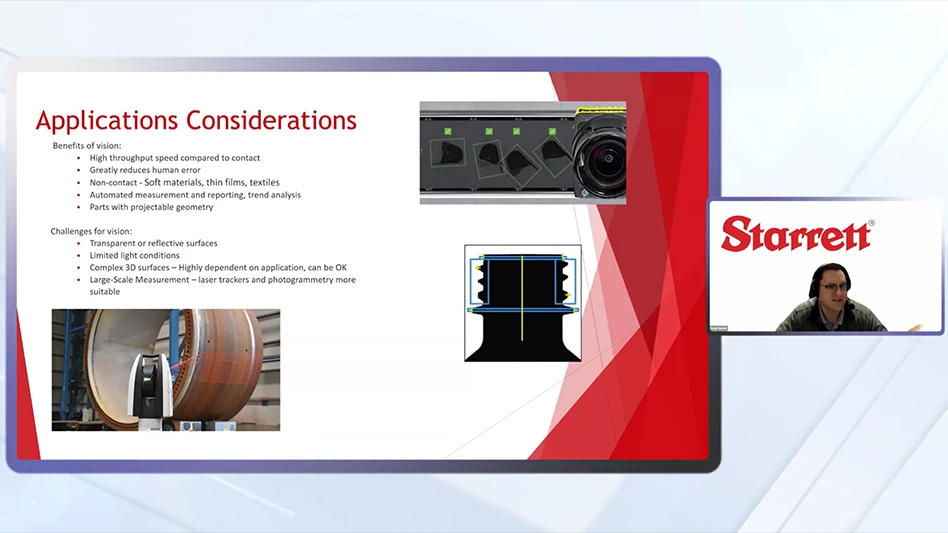 The aircraft that accomplished these aviation feats was designed and built by a team from Embry-Riddle Aeronautical University, Daytona Beach, FL, and was entered in the 19th International Aerial Robotics Competition (IARC) sponsored by the Association for Unmanned Vehicle Systems International (AUVSI). The craft with the unusual flight-style placed third in the competition, winning an award for Most Innovative Air Vehicle, and captured the imagination of everyone who saw it fly. With thoughts of commercialization for the toy and hobby market, the student-led team brought their unmanned aerial vehicle (UAV) design into a fall-term course on Design for Manufacturing and Assembly (DFMA).
The aircraft that accomplished these aviation feats was designed and built by a team from Embry-Riddle Aeronautical University, Daytona Beach, FL, and was entered in the 19th International Aerial Robotics Competition (IARC) sponsored by the Association for Unmanned Vehicle Systems International (AUVSI). The craft with the unusual flight-style placed third in the competition, winning an award for Most Innovative Air Vehicle, and captured the imagination of everyone who saw it fly. With thoughts of commercialization for the toy and hobby market, the student-led team brought their unmanned aerial vehicle (UAV) design into a fall-term course on Design for Manufacturing and Assembly (DFMA).
Imagination Meets Reality
“This DFMA course is reality-based and bridges the gap between academics and industry,” says Sathya Gangadharan, Embry-Riddle professor of mechanical engineering. “A lot of times when students and practicing engineers do a design, they do not look at the practical aspects or cost implications of manufacturing the product.”
For the course, students have to select a product that has between 15 and 30 components and then use DFMA to come up with modified designs. These new designs explore alternative materials and manufacturing processes, which, in the end, allow the teams to preserve or improve features and functionality while reducing part count and cost. Gangadharan heard about design for manufacturing and assembly (DFMA) software three to four years ago and first taught a course on the subject last year.
Graduate student Christopher Hockley brought the competition-tested monocopter to the DFMA course looking to make improvements. Prior to the course, his team had considered several designs, choosing the maple-seed-inspired version – simple and elegant, with a single foamed wing, a thermo-plastic fuselage, a foam landing gear or foot, a carbon-fiber spar to give the wing rigidity, a plastic fan, and only two moving parts in all.
Because of the inspiration from the maple seed – or samara, meaning winged-seed – and the sensor requirements of the design, they named the aircraft the SamarEye. However, samara-derivative aircraft, as well as monocopters in general, have not gained much attention or acceptance, so there was very little existing design information and the team was really on its own when it came to design and materials. The team was also working in the dark when it came to cost, assembly, and manufacturing considerations as they prepped for the IARC event.
As a result, manufacturing time took too long – approximately 40 man-hours – and hot glue in large quantities was the fastener of choice. After the competition, some critical thinking was obviously needed to improve assembly and manufacturing, and to see the aircraft not as a collection of separate parts but as an integrated, holistic system.
Early in the Design Process
DFMA is an integrated suite of software solutions from Boothroyd Dewhurst Inc., Wakefield, RI, that helps engineers ask critical questions about their product designs early in the development process. Such an evaluation can have major impacts downstream on the manufacturing, assembly, and cost of those products.
Design for Assembly (DFA) software guides engineers to simplify a design using queries – such as whether parts move with respect to one another or whether they can be made of the same materials – the answers to which lead to reduced part count and cost. Functional efficiency, fewer parts, and ease of assembly are the goals.
Design for Manufacturing (DFM) software complements DFA, providing engineers with a structured way to examine process technology and material choices in order to anticipate manufacturing costs early in the product development life cycle. Manufacturing knowledge and reduced costs are the payoffs.
“With DFMA we are trying to solve a number of engineering problems,” Hockley explains. “By reducing part count, we are hopefully going to have a flying machine that not only works better, but is more weight-efficient, more weight-economical, and structurally stronger. We are also looking to make it more repeatable for manufacture.”
Students in the DFMA class follow a realistic design process, incorporating CAD, FEA, and tolerancing. “First, they model the part or product using CATIA to produce 3D views,” Gangadharan states. “Next, they perform FEA and calculate data on stress, deformation, and frequency constraints. Then they must tolerance the parts.”
Following this baseline design work, students then use the DFMA software modules to evaluate and refine their designs, using FEA in a feedback loop to prove out the functionality of their DFMA design changes.
 Analyzing the Design
Analyzing the Design
The student team’s SamarEye monocopter design was 71cm long, 184g in weight, and had 18 parts, eight of which were provided by outside sources. Of the remaining 10 parts to be manufactured, six were extruded and four were thermoformed, and all were of similar size except for the wing. This kept manufacturing costs low, as common injection molding and thermoforming equipment could be purchased with only the dies varying. Despite the aircraft’s light weight and comparatively weaker materials, the baseline design was structurally strong and had an ample factor of safety under typical operating conditions.
Using a projected product life volume of 100,000, and a batch size of 12,500, Hockley ran a DFMA analysis of the original design and determined that the cost of tooling was $2.55, the piece part cost was $4.25, and the assembly cost was $7.08 for a total cost per product of $13.88. Despite the fact that the baseline design had relatively few parts and that the manufacturing methods were already relatively simple, the analysis demonstrated that there was still room for improvement. Of the 10 manufactured parts, three of them – the fuselage top, fuselage bottom, and the wing – were the most expensive and therefore of most interest. As for assembly, more than 50% of the total product cost resulted from this activity, representing the greatest room for improvement of any design-to-cost variable.
Refining the Design
Following the DFMA analysis, in which the processes and components representing the greatest waste were identified, Hockley evaluated the design to see where improvements could be made. In the baseline design, the wing – the single largest piece – was made out of an expanded polystyrene thermoplastic (used as floor insulation) while the fuselage was made out of a PETG thermoplastic (used for clamshell packaging).
In the modified design, the team decided to combine the wing, fuselage, and main gear into one injection-molded polystyrene foam piece, with the main spar and fan housing molded in place. “These changes not only removed a number of components,” Hockley says, “but reduced the number of operations required in assembly.”
With the switch in materials from the stronger PETG to the weaker polystyrene, additional iterative FEA simulations were required to ensure that the aircraft could withstand all loading scenarios.
Cost, Time improvements
“In the redesign, I cut the parts down from 18 to 13, eliminating five manufactured parts,” Hockley explains. “This consolidation was the result of combining parts that shared materials or did not have motion relative to one another. Another benefit of parts consolidation is a reduction in part interfaces, which improves quality by helping eliminate stress at joints and fasteners.”
With commercialization of the monocopter in mind, Hockley is excited by the final DFMA results for his class project: piece part cost reduction of 25%; overall product cost reduction of 51%; assembly labor time and cost reduction of 74%; and a grand total savings of 625 days and $717,000 for a production run of 12,500. Such savings are huge – when you need to keep an eye on what rings up at the register – and can be the difference between commercial success or failure.
Gangadharan is a champion for the lessons that DFMA can teach the next generation of engineers. “In the aerospace industry, and more specifically in the UAV market, it is becoming increasingly important to maximize functionality while minimizing cost,” he says. “DFMA is the perfect tool for accomplishing this.
“The engineering students’ success in industry depends on how close to reality they are able to think.”
Embry-Riddle Aeronautical University
Dayton Beach, FL
erau.edu

Explore the November December 2010 Issue
Check out more from this issue and find your next story to read.
Latest from Aerospace Manufacturing and Design
- UT researchers receive Air Force grant for wind tunnel
- Monticont's linear voice coil servo motor
- FAA certifies Pratt & Whitney GTF engine to power the Airbus A321XLR
- Wevo's silicone gap filler
- Daher Learning Center inaugurated
- HEMCO Corporation's UniFlow CE AireStream fume hoods
- IMTS 2024 Booth Tour - Niigata
- PNAA announces ADVANCE 2025





